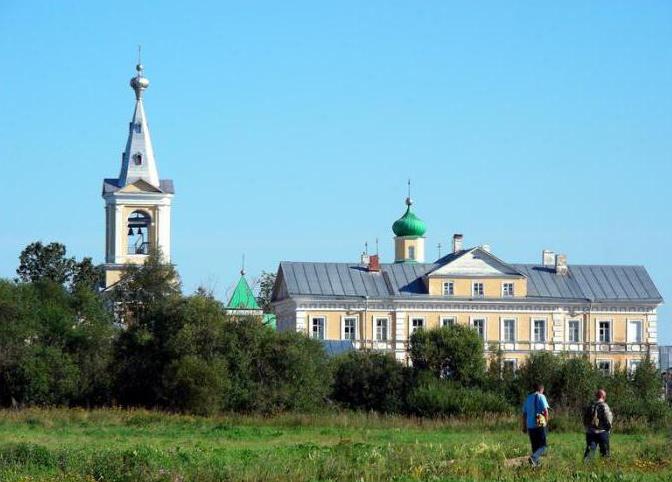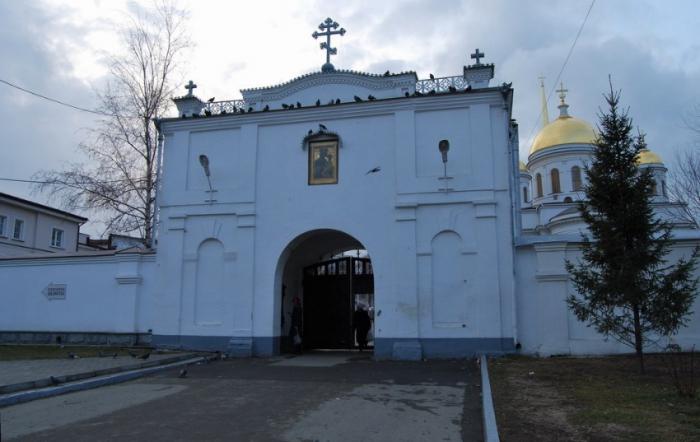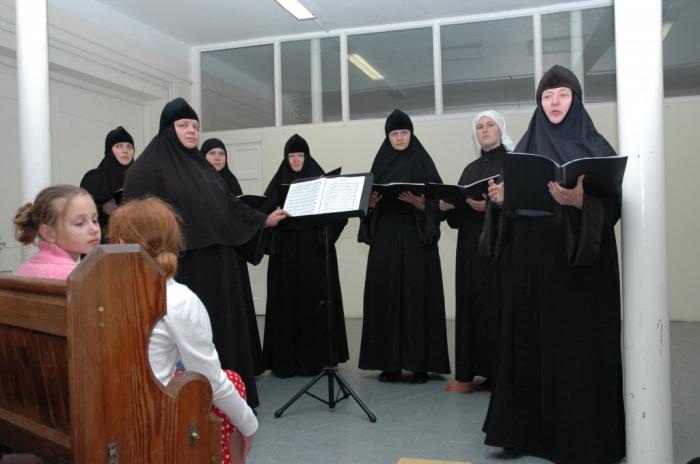In the very name of the "Permission-Oyatsky Monastery"are data on his whereabouts. There is a monastery on the Oyati River, the left tributary of the Svir. The Oyat River is a district of ancient Slavic settlements and is mentioned in the annals from 1137 onwards.
Ancient monastery
Normally, the cloister gets its name from the firstyour temple In this monastery the temple was consecrated in honor of the introduction of the Most Holy Theotokos into it. Initially, it was a male abode, and it was called Vvedensky Ostrovsky monastery. Ostrovsky because each spring, at the time of the flood on the river, a highland turned into an island, on which a monastery was located. Later he received the name of the introduced-Oyatskogo.

Especially revered saint
The first official information about him mentioned inLives of St. Alexander Svirsky, refer to the year 1545. This book was written by the disciple of St. Herodion. The monastery is mentioned in connection with the birth in the village of Mandera, located on the right bank of the Oyati, opposite the monastery, in the Vepsian family (Vepsians - the small Finno-Ugric people) of the peasants Stephen and Vassa of the future saint, revered in the reverend - Alexander Svirsky (1448-1533 ).

The nearby large cloister
By Alexander Svirsky himself in the Olonets region inAt the end of the 15th century, a monastery was laid, which was erected in 1533 with the donations of Basil III. Why is it mentioned in this article? Because as a result of the Swedish raids and ruins perpetrated by them, the Ostrovsky Monastery entered into existence ceased to exist. And from the middle of the XVII century and until 1764, it was restored, it was assigned to the Alexander Svirsky monastery. He was assigned the role of master of the larger cloister. And in 1764, the present-day Introduced Oyatsky monastery becomes a contingent, that is, an abode located on its own provision, without any support.
Gradual rebirth of self-abode
Until 1817, all the buildings of the monastery werewooden. The first stone building was the second church of the monastery - Epiphany. It had a warm chapel, consecrated in honor of the Tikhvin Icon of the Mother of God, a refectory bell tower (the date of construction of which is unknown) with six bells.


The usual post-revolutionary fate
By the beginning of 1917 this monastery was the mostsmall - only 10 monks and three novices lived in it. The tragic fate of the majority of religious buildings of the Orthodox Church has not bypassed this monastery. By the decision of the authorities, it was closed, and all the monks and monks living at that time in the monastery together with the abbot were destroyed here, near the walls of the monastery. The temple became a club, and the three-tiered bell tower - a water tower. Many buildings were destroyed.
Revival in the new status
And in this terrible form in 1991, the formerthe monastery was handed over to Holy Trinity Izmailovsky Cathedral. In December 1992, a new life of the cathedral farms began. The monastery was revived, but it became known as the Oveate-Oyatsky convent, the first prioress of which was the now-dead Lydia Alexandrovna Konyasheva (in the world), or Mother Thecla. The abbess of today is nun John. Slowly built up the Permission-Oyatsky monastery. The source, who scored near it at the end of the last century, became one of its attractions.
Miraculous power
Spring on Oyati in these places has always been.Earlier, before the revolution, he was considered the strongest healing holy source. In addition, according to legends, demons are afraid of this water, the source helps women to get rid of infertility and cure other female diseases. Mineral water in it. Interestingly, its temperature does not drop below 12 degrees throughout the year. Water is not only warm, it contains iodine and radon. The holy spring of the Permission of the Oyat monastery has its own interesting history.
Wonderful revival
During the years of militant atheism, Komsomol members foughtwith a holy spring - he was bombarded. And then, perhaps because the water tower in the former bell tower was near, the water went away and scored again, as Mother Thekla claimed, after the frantic prayers of the nuns. Water was vital for them, as the authorities blocked the water supply to the monastery. Source scored again. And then, near the revived spring, energetic representatives of the nascent bourgeoisie began to spin, wishing to sell holy healing water. As soon as it began to be packaged in bottles, the water disappeared again and returned again after the closure of the plant.
Holy Source Popularity
Now the monastery is actively being restored, andthe source is incredibly popular. A chapel is installed above it in honor of the icon of the Mother of God “Life-Giving Spring”, and a swimming pool was erected near a natural pond into which iodine-radon water flows. The fame of the healing power of the source has spread far, and pilgrims who believe in its holy power, aspire to the Monastery of Ovedeno-Oyatsky.
Station "Oyat" - the main landmark
Как доехать к целительному источнику?The cloister refers to St. Petersburg and is located on Bolshoi Sampsonievsky Prospekt, at number 53. The cloister of the monastery is located not far from the Alexander-Svirsky monastery, from which, having traveled for a short time along the Murmansk highway, you need to turn off to the Oyat railway station, and after 5 km you will find yourself at the desired abode.













